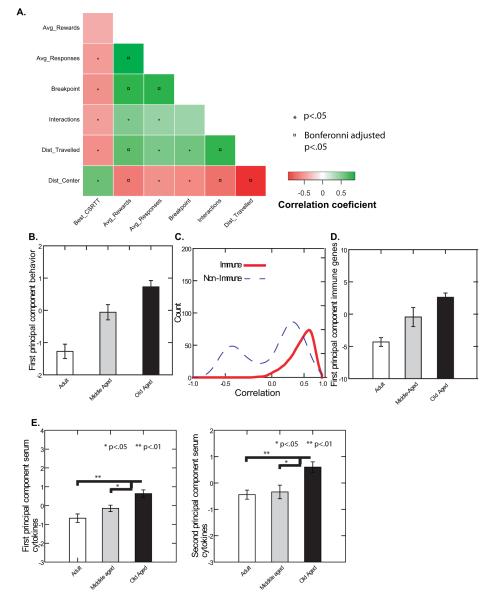FIGURE 4.
A Heat map depicting Pearson correlation coefficients between CSRTT acquisition, average number of rewards obtained on the CSRTT, average number of responses made on the CSRTT, locomotor speed, distance from the open field center, and novel object interactions. With the exception of two relationships (progressive ratio breakpoint-novel object interaction and CSRTT acquisition-average rewards obtained on the CSRTT) all of the relationships were significant (p<.05) without multiple comparison correction (“*”) and seven relationships remained significant after Bonferonni correction (“¤”).
B The first principal component of the cognitive-behavioral data was significantly associated with age by analysis of variance (F(2,20)=48.79, p=0.000001). Error bars represent the standard error of the mean.
C Linear correlation coefficients between immune-related and non-immune-related genes (see Fig 2) were calculated and used to generate kernel density plots to illustrate the distributions of the correlation coefficients. The non-immune-related genes showed negative as well as positive correlations with one another, whereas the immune genes showed only positive inter-correlations, with a large proportion of strongly positive correlations, consistent with a high degree of internal consistency for this set of genes.
D The first principle component of the microarray data set (described above) was significantly associated with age for both cohorts (Cohort 1 F(2,20)=17.26, p=0.000044; Cohort 3 F(2,27)=15.56, p=0.000032). Error bars represent the standard error of the mean.
E The factor scores from the first two principal components of the cytokine data were related to age group by analysis of variance. Both factor 1 (left panel; F(2,53)=11.729, p<0.0001) and factor 2 (right panel; F(2,53)=8.410, p=0.001) were significantly related to age.

